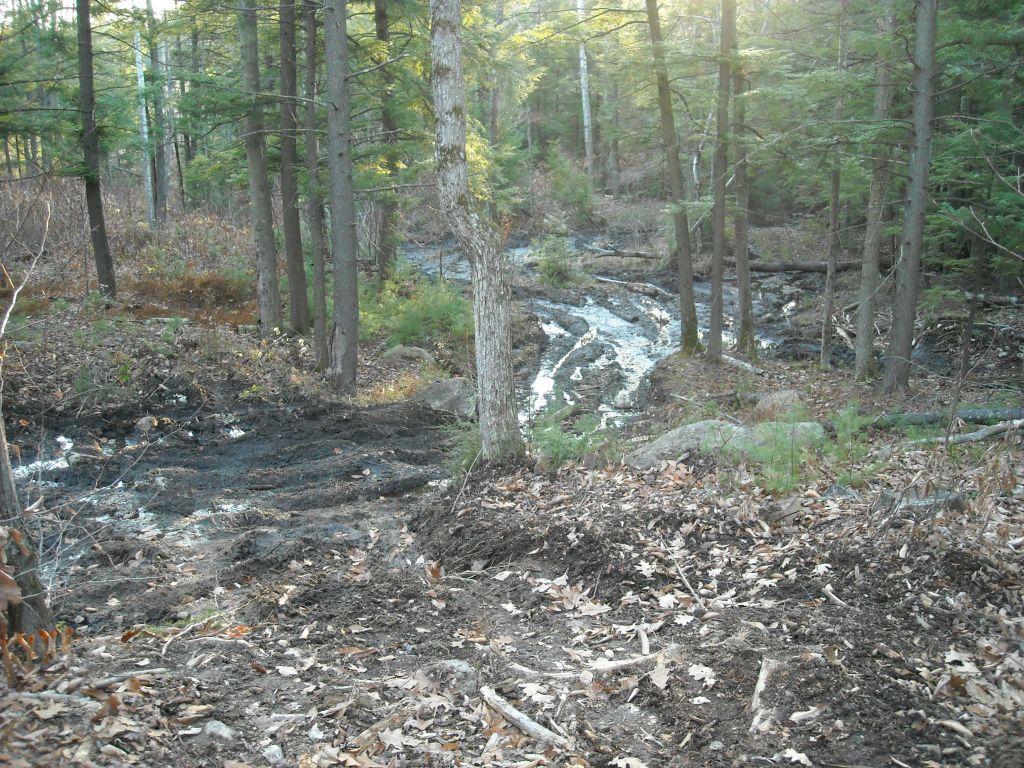Managing Land for Recreation Can be Tricky

ATV Damage to a wetland on Forest Society land. Photo by W. Weisiger
In the early days of my forestry career it was called Multiple Use Management (MUM). I’m not sure what it’s called these days, because I never left MUM behind. It’s what we do at the Forest Society; we try to figure out what the resources are that can be managed for and then develop a plan that protects those resources at the same time they’re being used.
For timber we inventory and prescribe treatments; for wetlands and water quality we usually protect by using buffers and limitations on access. For wildlife, we look at habitat distribution and quality and, if needed, call in the experts to help us enhance the habitat features we find. We know in this process that not every acre can provide multiple outcomes, but over all we can do some good.
When it comes to managing a property for recreation, our job can sometimes be pretty basic but other times kind of tricky. Previous uses of the properties we acquire can be good or bad. When we acquire a new property, we inventory it and develop a plan of actions that enhance the good things and limit or mitigate the bad. Through this inventory and prescription process we identify sites that may offer vistas, areas of cultural interest, good fishing spots or just places that make you feel good by being there.
Using this appreciation of the wonders our forests contain, we categorize the properties from “just a woodlot” to “pretty cool.” The real rating system is a bit more academic, but you get the drift.
For most landowners, there is a tension in allowing some things while discouraging others. We want to be open and welcoming, but at the same time we have concerns for the resources. We want the woods and soil and quality features to be treated well and last decade after decade.
Hedgehog Mountain in Deering is a good example of a property that came to us with historic uses that were not focused on enjoying the resource over the long term, but instead focused on vehicles, sort of a man and machine against the world. Our inventory showed miles of unmaintained roads that were heavily eroded in areas of slope, went through or too near wetlands and other fragile ecosystems, and were not located to take advantage of some of the outstanding features of the property.
Our vision for Hedgehog Mountain is to take advantage of the recreational resources, bringing to the foreground the spectacular views and the varied landscape, while over time reducing the impacts caused by the past misuses. The hope is to provide future users with adventures, wonder, and a new sense of place that they are prevented from receiving now because of the condition of the land.
Planning for and executing the needed changes will be a gargantuan feat. It will require the work of many volunteers, much staff time, input from town officials and user groups, and, of course, dollars. Actually, that describes most of our land-related projects.
